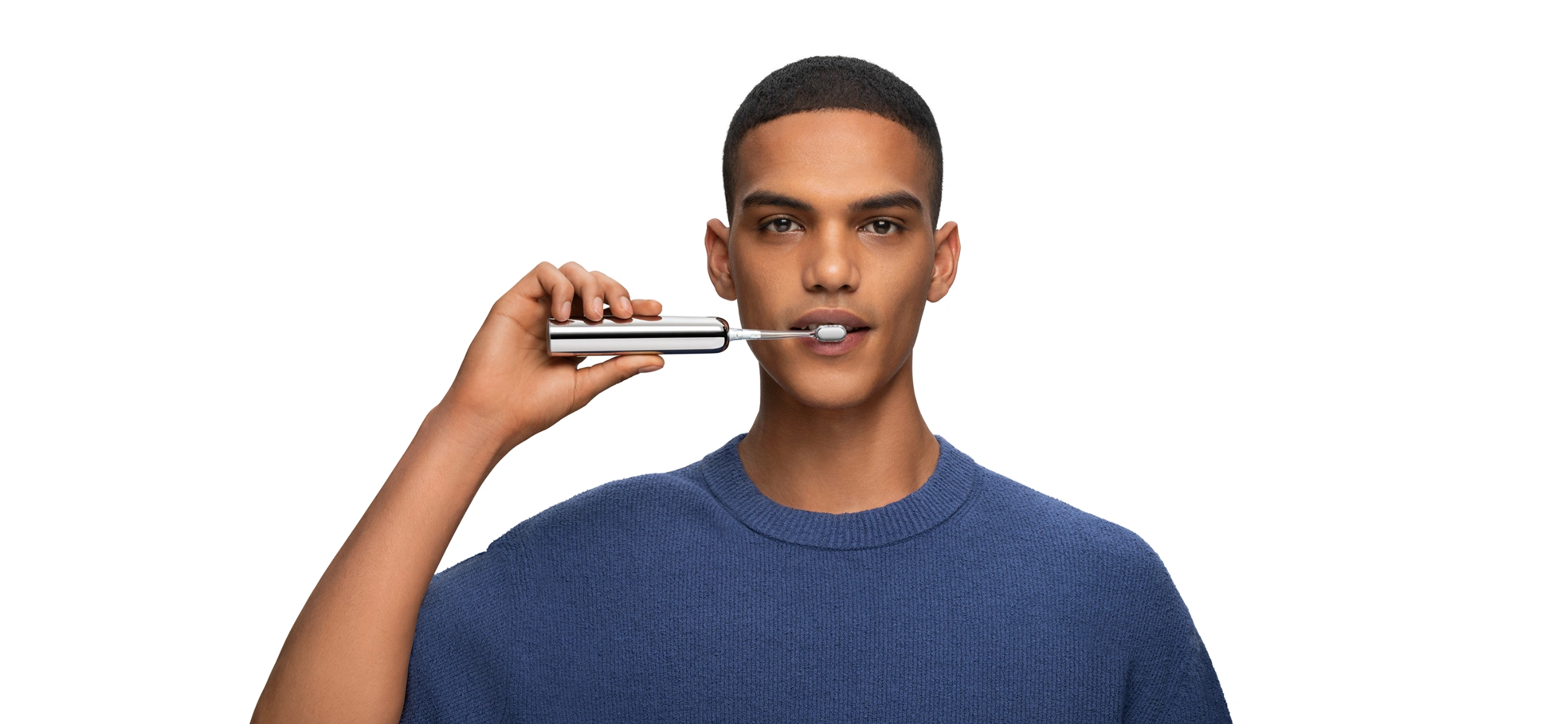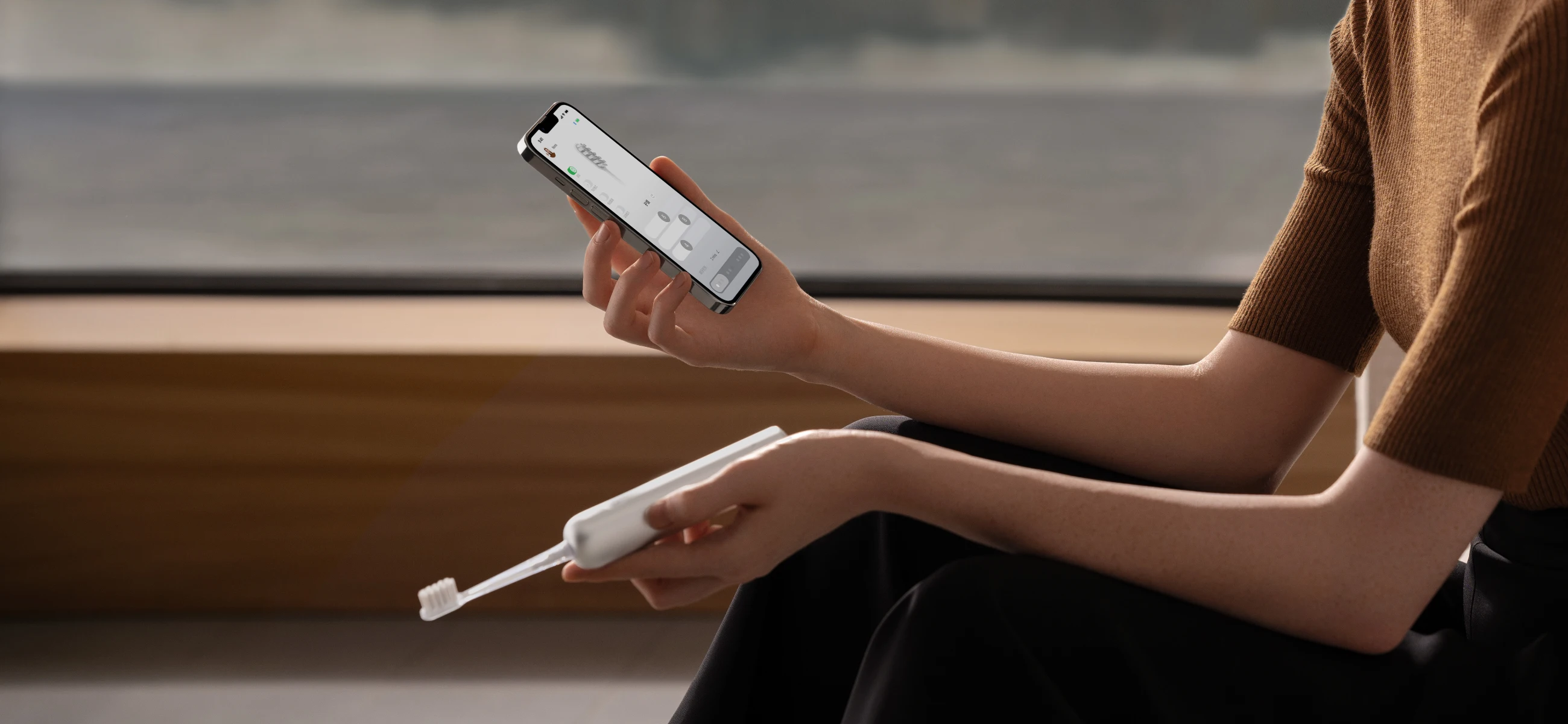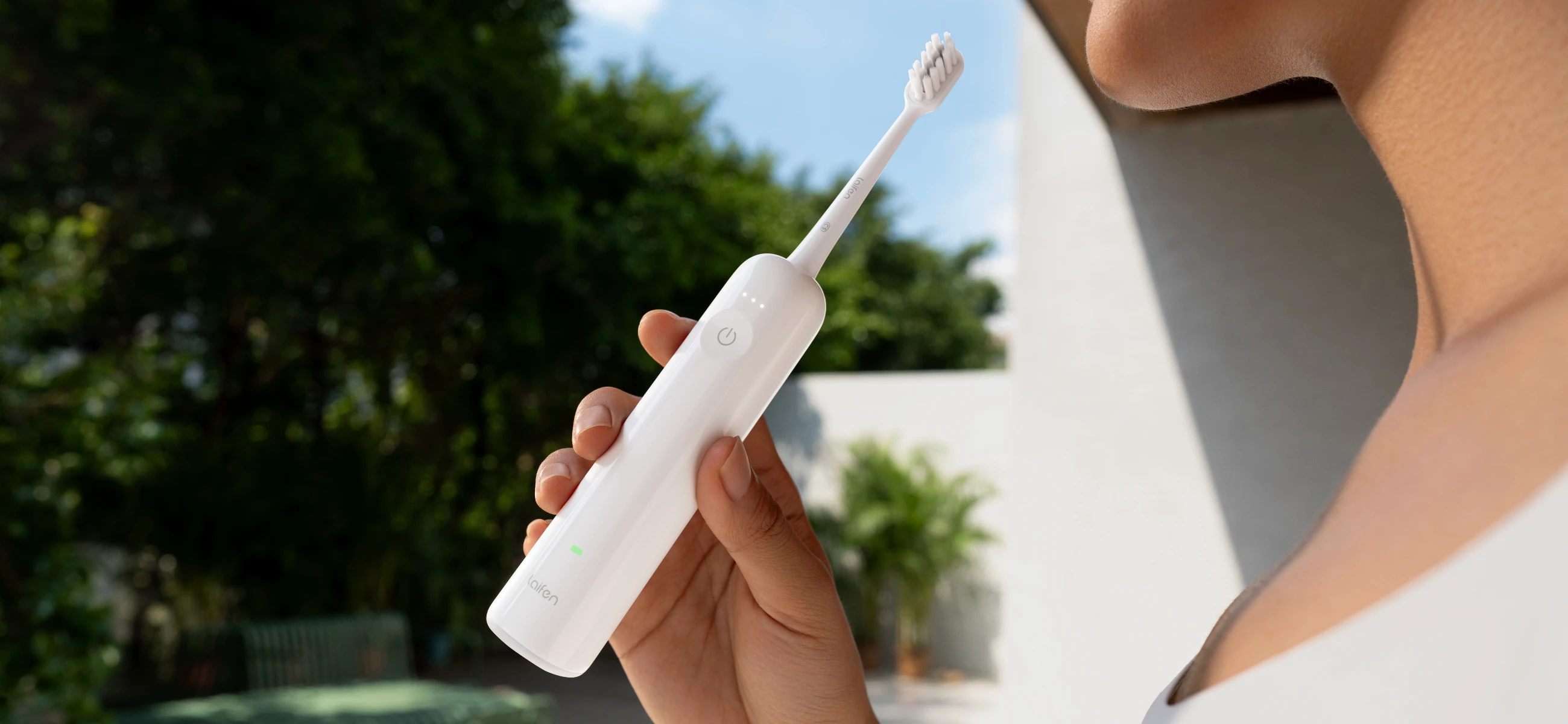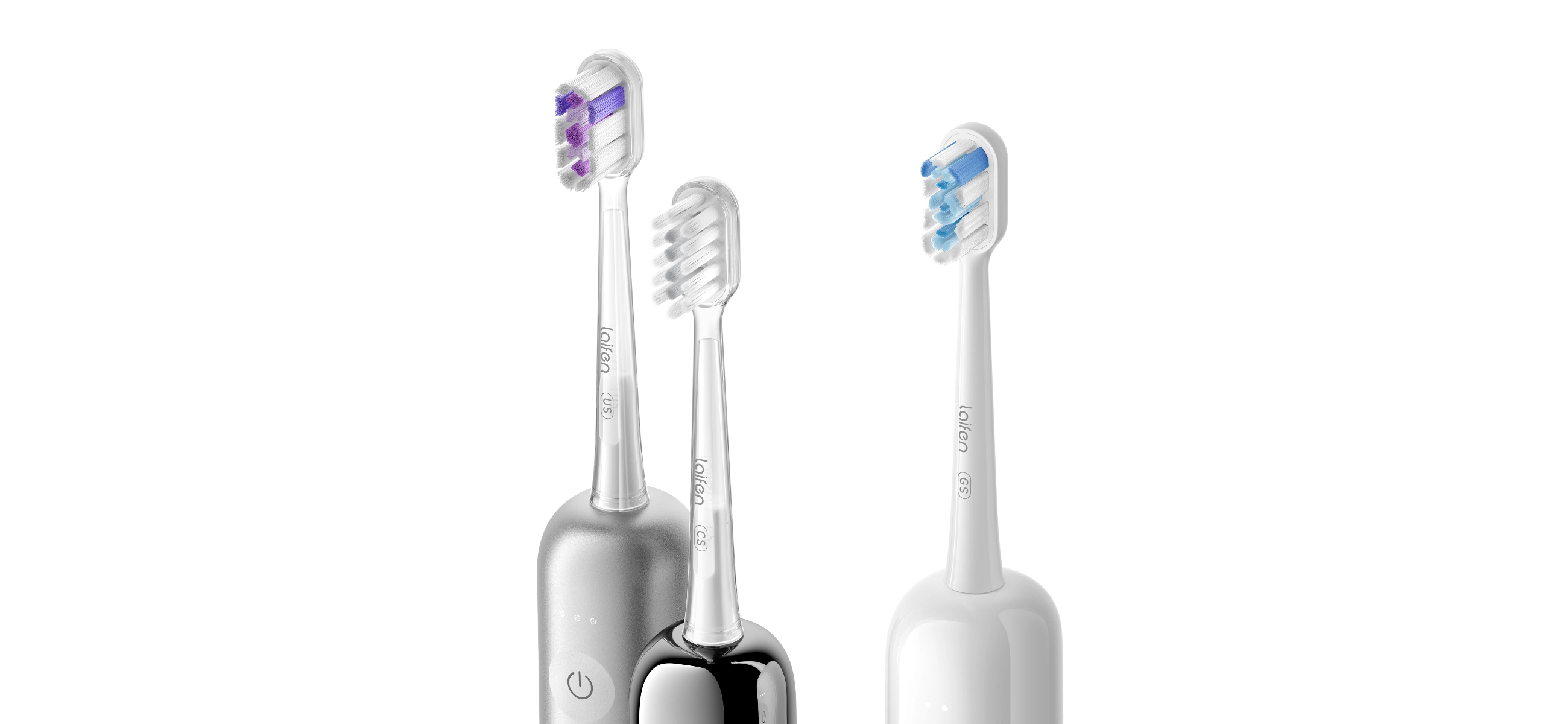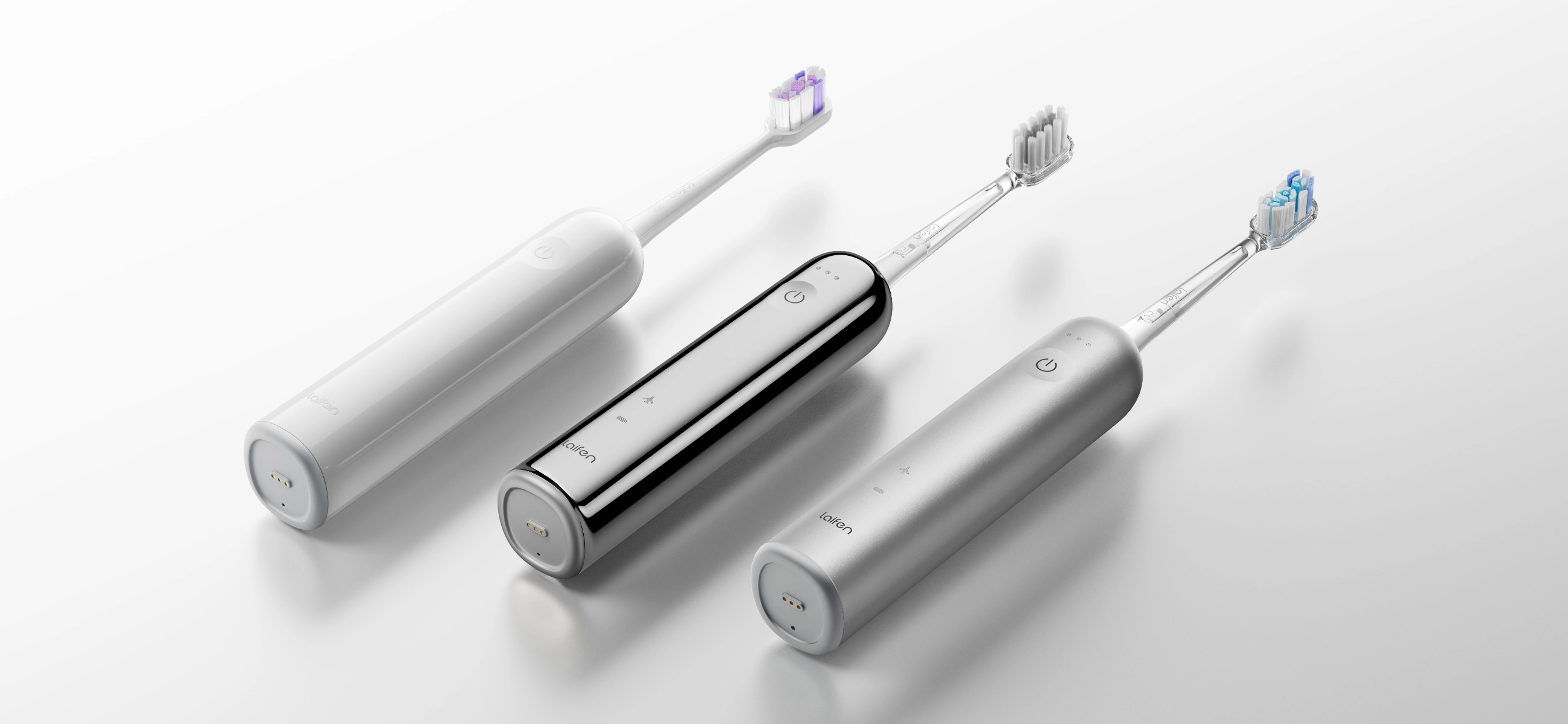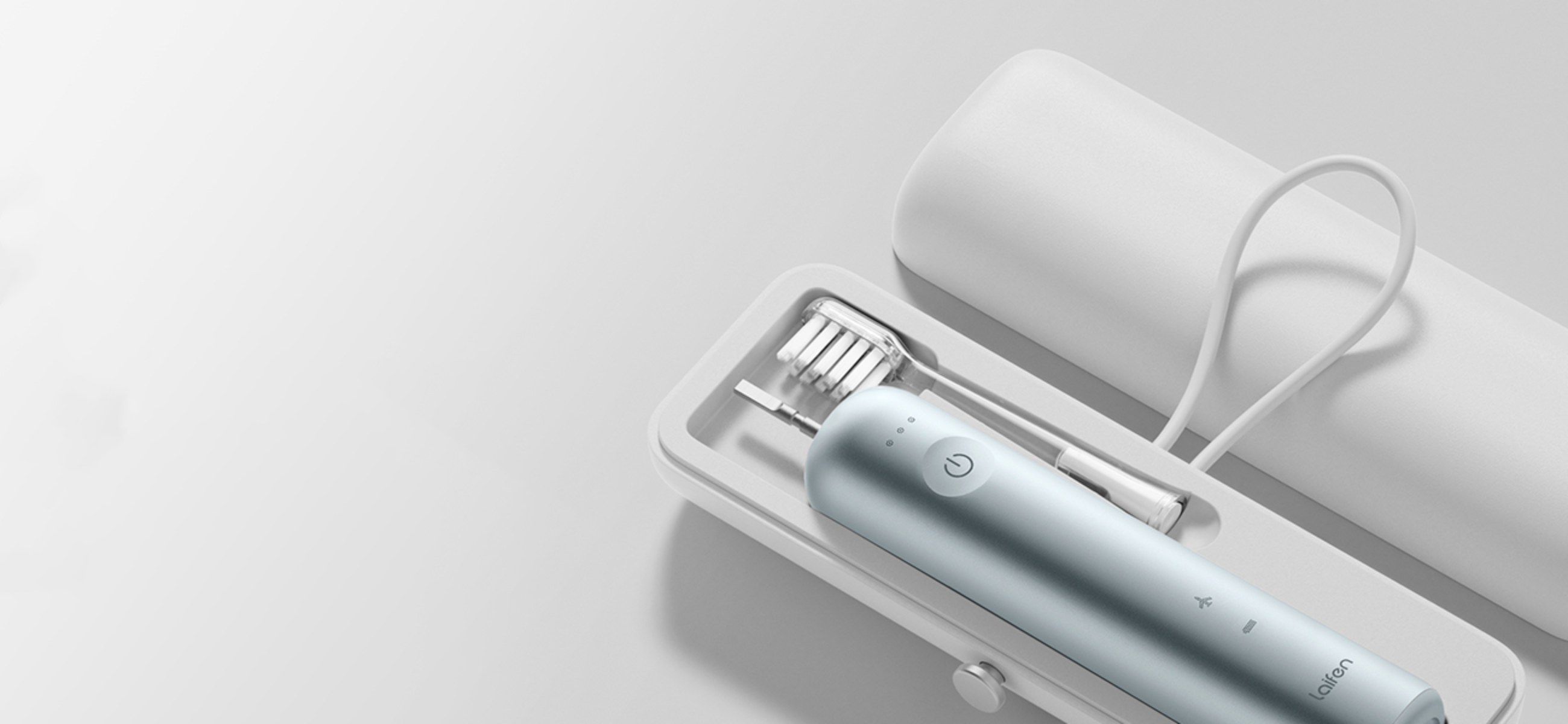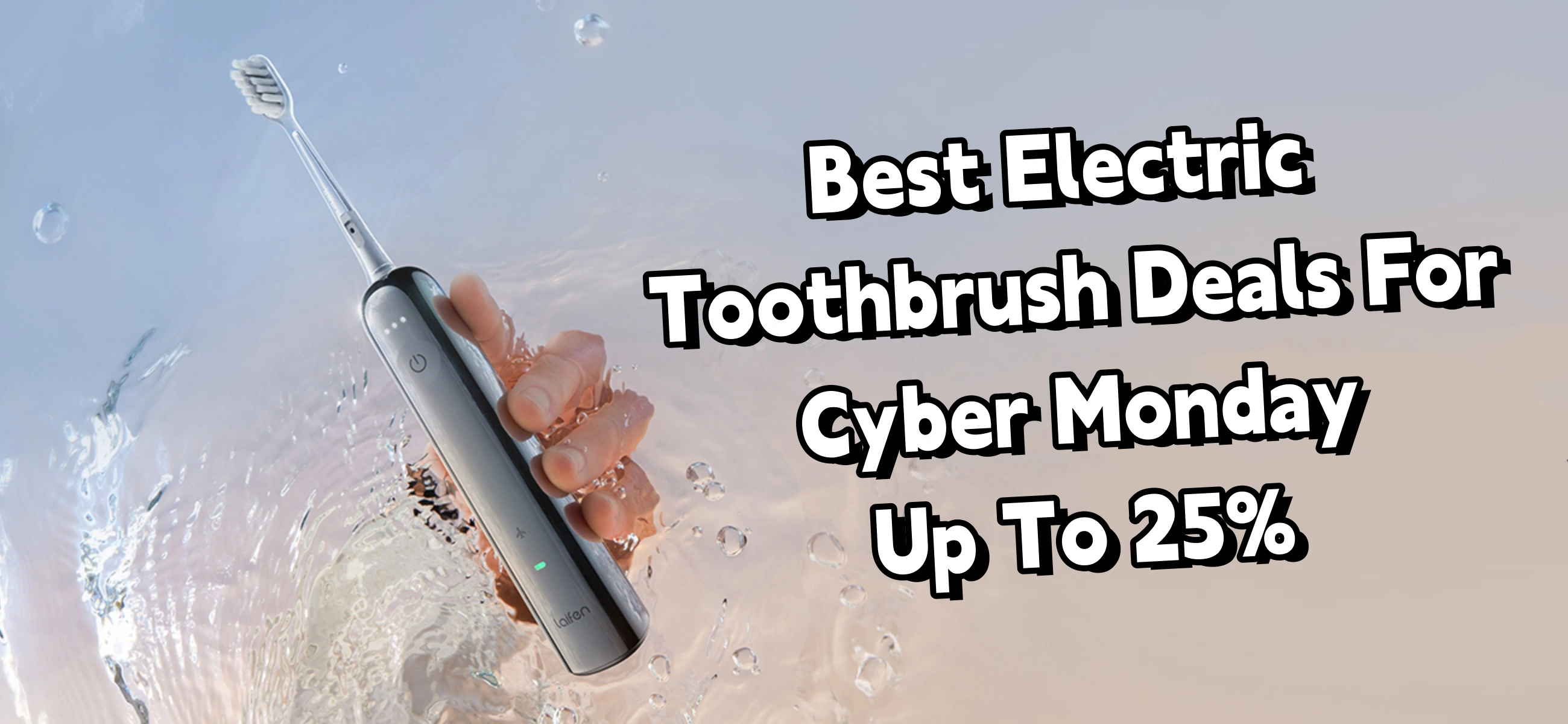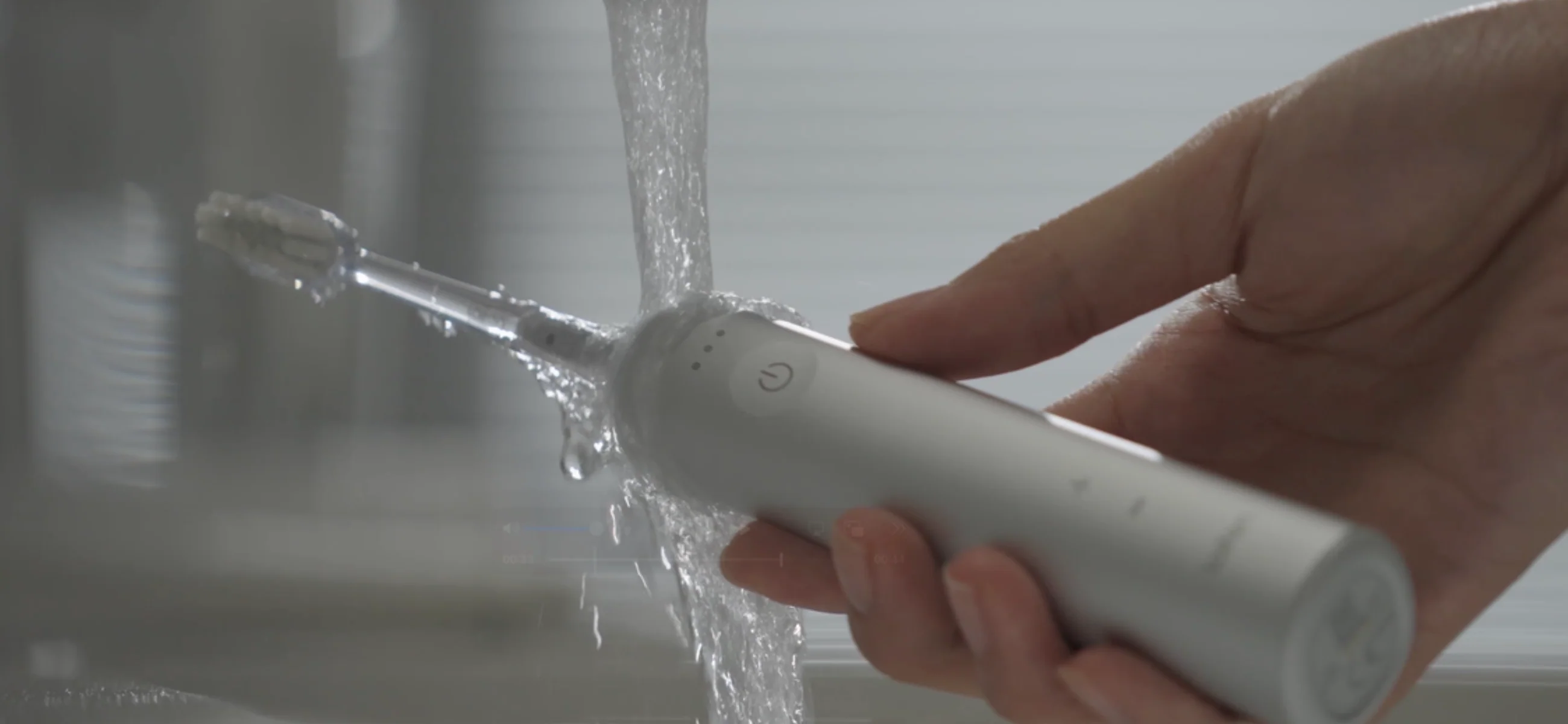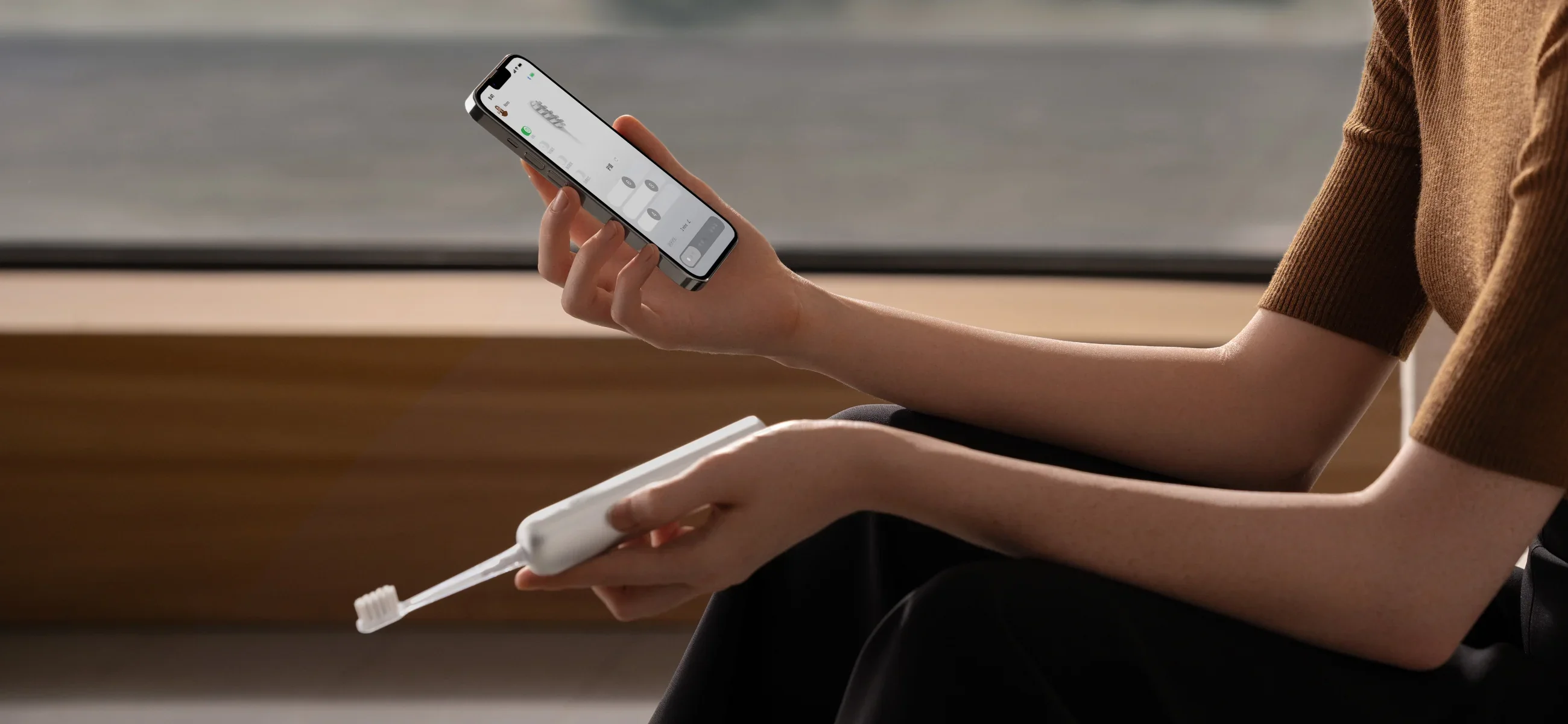Many worry about whether electric toothbrushes can damage their teeth and gums. This concern often comes from not knowing about the advanced technology in today’s electric toothbrushes. For instance, some brands include Laifen Wave supports a dual-action brushing mode and comes with an app that lets you control the brushing parameters. This means you can customize the brushing experience to be clement on your gums and enamel while still being effective at cleaning. Here I’ll explain more about how these electric toothbrushes work and how you can use them without any worries.
Why can using an electric toothbrush protect your teeth and gums?
As most electric toothbrushes but performs better, Laifen Wave is designed to protect your oral health while providing a superior clean. Here’s how it works:
Tender yet efficacious brushing
It uses a dual-action brushing method, which supports high-frequency vibrations (up to 66,000 times per minute) with a 60° oscillating motion. This aligns with the dentist-recommended Bass brushing technique, so a thorough clean that is benign on your gums and enamel and can reduce the risk of damage.
Consistent cleaning power
Equipped with a robust servo system, Wave delivers three times the cleaning power of traditional electric toothbrushes. Its embedded PID control system maintains a consistent brushing force, even when facing resistance, which helps prevent excessive pressure that can harm your gums and teeth.
Hygienic design
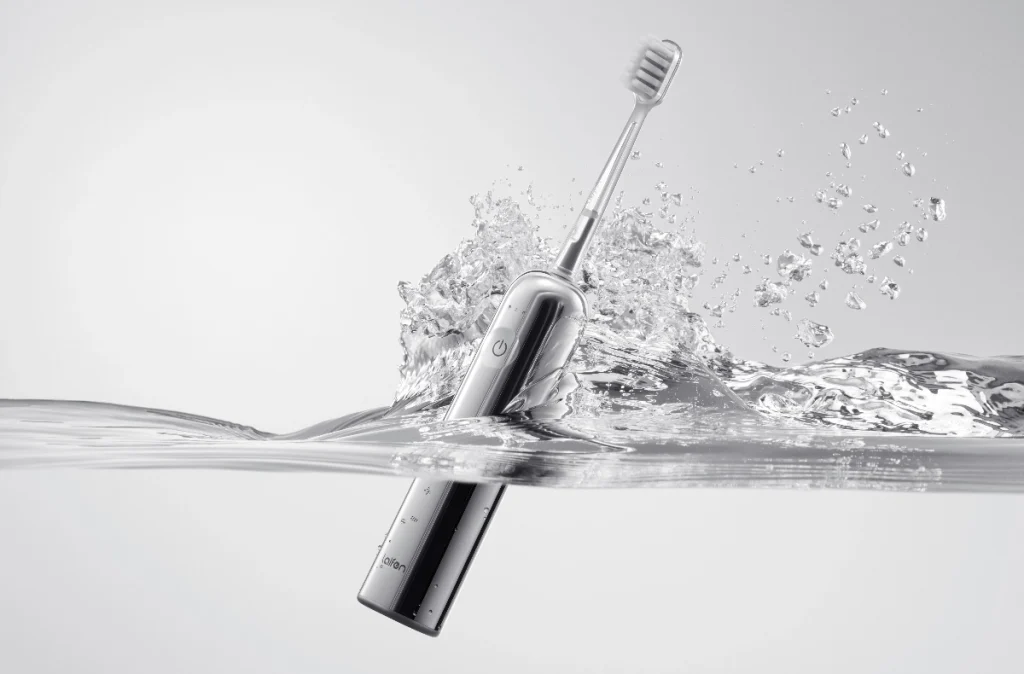
The well-brushed design of the Laifen Wave prevents debris from collecting. Its IPX7 rating means you can safely rinse the handle under water, which helps your brush head stay clean and free from harmful bacteria.
Specialized brush heads
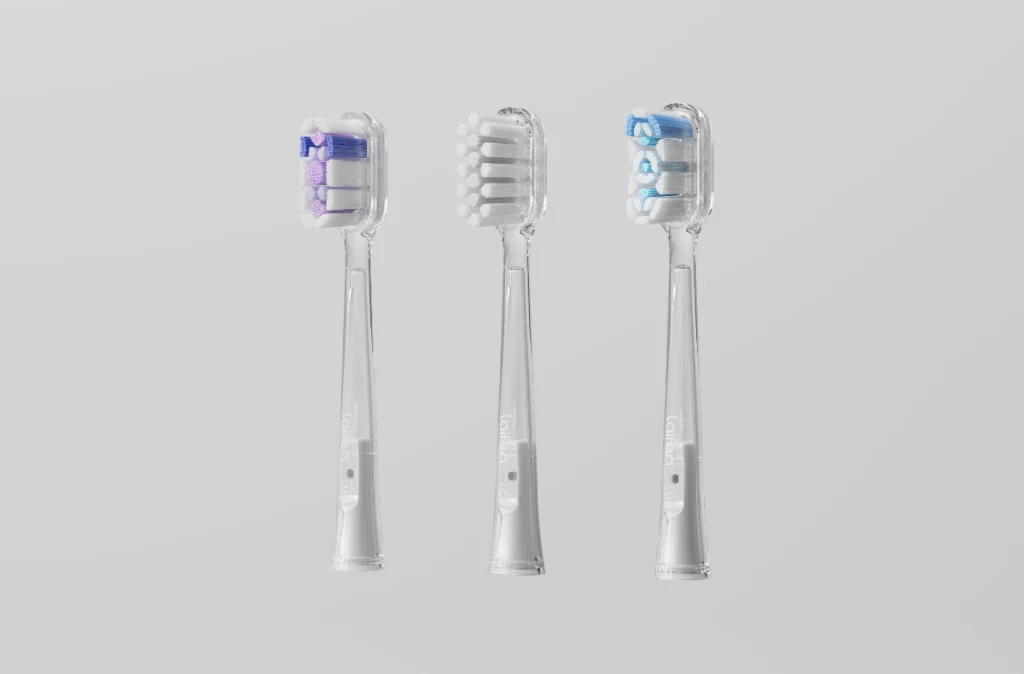
It includes three specially designed, copper-free brush heads: Gum Care, Super-Clean, and Ultra-Whitening. The Gum Care head, with its soft bristles, is perfect for first-time users or those with sensitive gums.
Customized brushing experience
The Laifen App allows you to personalize your brushing routine with ten levels of intensity for vibration strength, oscillation range, and speed. This customization helps you avoid brushing too hard, which can lead to gum recession and enamel erosion
Can a hard-bristle electric toothbrush damage teeth?
Yes, a hard-bristle electric toothbrush can damage your teeth. Using hard bristles can cause excessive wear on your enamel, the protective outer layer of your teeth, leading to sensitivity and an increased risk of cavities.
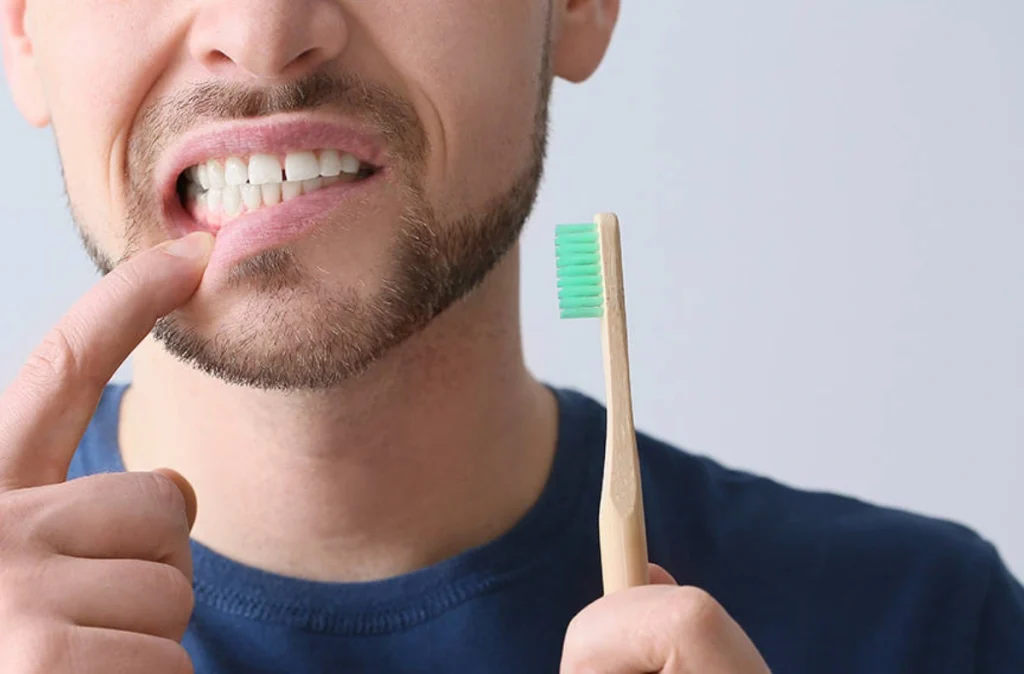
Hard bristles can also irritate your gums and potentially cause gum recession. Over time, brushing too hard, whether with a manual or electric toothbrush, can erode enamel and push gums back, exposing the sensitive roots of your teeth.
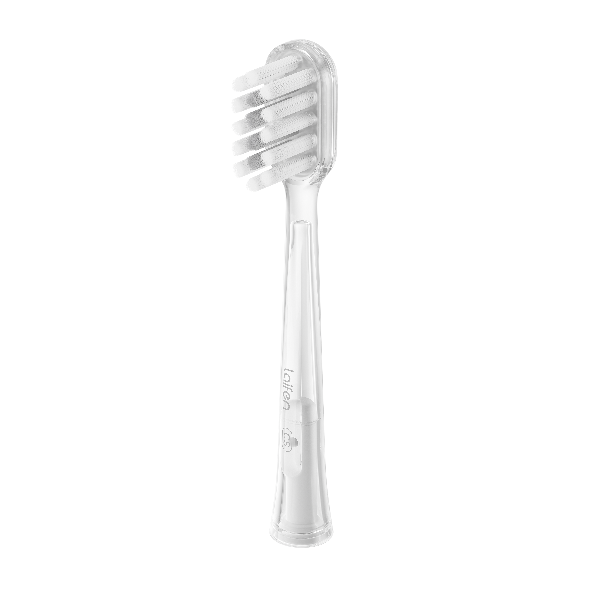
To protect your teeth and gums, it’s recommended to use a toothbrush with soft or medium bristles and employ lenient, consistent brushing techniques.
Can electric toothbrushes damage your gums?
Electric toothbrushes can damage your gums if not used correctly. Brushing too hard, regardless of the type of toothbrush, can cause gum irritation and recession. But modern electric toothbrushes, like the Laifen Wave, come with features designed to protect your gums. Using proper brushing techniques and the right settings can help prevent gum damage while maintaining effective oral hygiene.
Do electric toothbrushes affect your enamel?
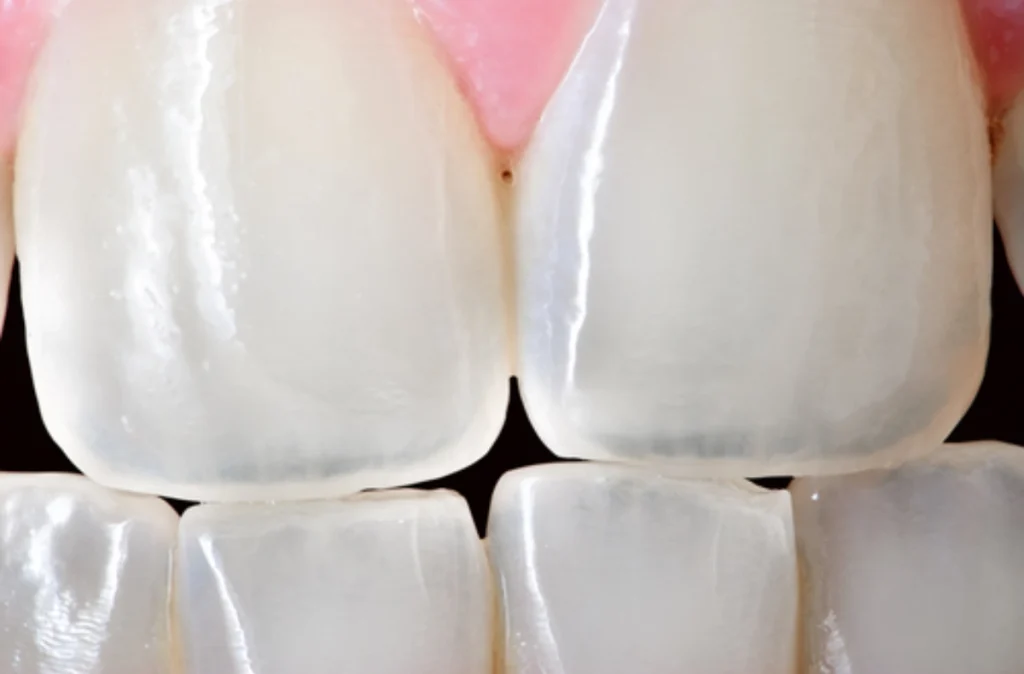
Electric toothbrushes can affect your enamel, but whether the impact is positive or negative depends on how you use them. When used correctly, electric toothbrushes can enhance your oral hygiene without damaging your enamel. They are designed to remove plaque and stains more effectively than manual brushing, thanks to their powerful brushing motions. But if you brush too hard or use a toothbrush with hard bristles, you can wear down your enamel over time.
Tips to protect your teeth and gums
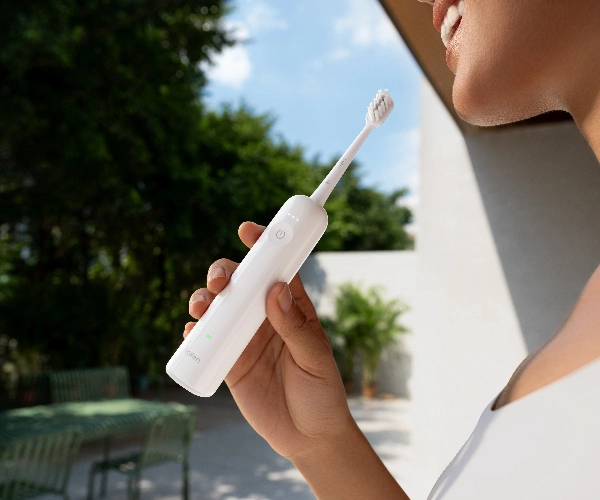
- Swap out your old brush for one with soft or medium bristles. Hard bristles can be rough on your enamel and gums, causing damage over time.
- Don’t brush like you’re scrubbing a dirty pan.
- Brush your teeth twice a day – once when you wake up and once before you hit the sack. This helps keep plaque and cavities at bay.
- Hold your toothbrush at a 45-degree angle to your gums and use short, gentle strokes. This method cleans along the gumline effectively without causing damage.
- Don’t skip the floss. It gets rid of the stuff your toothbrush can’t reach, like food particles and plaque between your teeth and along the gumline. Daily flossing can prevent gum disease and cavities.
- Use an antibacterial mouthwash to cut down on plaque and keep gum disease away. Fluoride mouthwashes can also help strengthen your enamel.
- Get a new toothbrush or replace the head on your electric toothbrush every three to four months, or sooner if the bristles are looking frayed. Worn-out bristles just don’t clean as well and can be tough on your gums.
- Cut back on sugary snacks and drinks. They can lead to tooth decay. If you do indulge, try to brush your teeth afterward to keep the sugar from sticking around.
What should be considered when first using an electric toothbrush?
You’re supposed to meet some tough conditions when you use an electric toothbrush suddenly, read those tips to help you face with them with enough knowledge.
Bleeding gums:
- Condition: Your gums may bleed when you first start using an electric toothbrush, especially if you’re switching from a manual one.
- Solution: This can be a sign of gum disease or simply an adjustment period. Continue brushing with a soft-bristle head.
Sensitivity:
- Condition: Increased tooth sensitivity can occur when you switch to an electric toothbrush.
- Solution: Use a brush head designed for sensitive teeth and lower the intensity setting if your toothbrush has that option. Sensitivity should decrease as your teeth adjust.
Uncomfortable vibration:
- Condition: The vibrations of an electric toothbrush can feel strange or uncomfortable at first.
- Solution: Start with shorter brushing sessions to get used to the sensation. Gradually increase the time as you become more comfortable with the vibrations. 2 minutes are good.
Bad feel or taste:
- Condition: You might notice an odd taste or feel in your mouth after using an electric toothbrush for the first time.
- Solution: Rinse your mouth after brushing. Sometimes, the initial use can stir up more bacteria, which will improve with regular use.
Battery and charging issues:
- Condition: If the toothbrush runs out of power quickly or doesn’t hold a charge.
- Solution: How long does an electric toothbrush take to charge? You’re fully charging the toothbrush before its first use.
Wrap up
With the right techniques and proper care, any electric toothbrush won’t harm anything. That is to say, using an electric toothbrush with the correct brush heads and mild brushing techniques can enhance your dental hygiene. You should also be cautious when starting with an electric toothbrush. Try to avoid using hard-bristle heads, as they can be abrasive and cause damage over time. Your smile deserves the best care, so take these steps to protect it!

